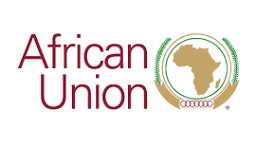The B.C. government’s recent announcement of extensive bans on public drug use as part of its decriminalization reform has sparked intense discussions across various sectors. This move represents a departure from traditional approaches to drug policy, emphasizing a balance between public health concerns and community safety. In this article, we delve deeper into the implications and potential impact of these bans on public drug use within the context of broader decriminalization efforts.
Understanding the Context
For years, British Columbia has been at the forefront of addressing the challenges posed by drug use, particularly in the wake of the opioid crisis. The province’s approach has evolved from punitive measures to harm reduction strategies aimed at minimizing the harms associated with drug use while prioritizing public health. The latest reform reflects a continued commitment to innovative solutions while acknowledging the need for stricter measures in certain contexts.
Details of the Bans on Public Drug Use
The bans on public drug use are comprehensive, encompassing a wide range of substances and settings. Individuals found consuming controlled substances in public spaces such as parks, sidewalks, and transit stations may face penalties ranging from fines to diversion programs aimed at addressing underlying issues related to substance use. The intent is not punitive but rather preventive, aiming to deter public drug use while providing support and resources for individuals struggling with addiction.
Rationale behind the Bans
The rationale behind these bans stems from concerns about public safety, community well-being, and the normalization of drug use in public spaces. By prohibiting public drug use, the government aims to create safer environments for all residents, including vulnerable populations such as children, seniors, and individuals with substance use disorders. Additionally, the bans seek to reduce the visibility of drug use, which can contribute to stigma and social discord.
Critiques and Controversies
While the bans are designed with good intentions, they have not been without criticism. Some argue that penalizing individuals for public drug use perpetuates a cycle of criminalization, particularly for marginalized communities already disproportionately affected by punitive drug policies. Others raise concerns about the potential displacement of drug use into less visible or more dangerous settings, highlighting the need for a comprehensive approach that addresses underlying factors contributing to substance use.
Implementation Challenges and Solutions
Implementing bans on public drug use presents several challenges, including defining public spaces, training law enforcement and other stakeholders, and ensuring consistent enforcement while respecting individual rights. Collaborative solutions involving community engagement, harm reduction strategies, and access to treatment and support services are essential in addressing these challenges effectively. Moreover, ongoing evaluation and feedback mechanisms can help fine-tune implementation strategies and mitigate unintended consequences.
Public Reaction and Stakeholder Engagement
The public’s response to the bans on public drug use has been diverse, reflecting varying perspectives on drug policy, public safety, and individual rights. Engaging stakeholders, including affected communities, advocacy groups, healthcare providers, and law enforcement agencies, is crucial in shaping the implementation process and addressing concerns and feedback. Transparency, communication, and collaboration are key pillars in building trust and fostering meaningful dialogue around complex issues like drug policy reform.
Looking Ahead
As the bans on public drug use are rolled out and implemented, ongoing monitoring and evaluation will be essential to assess their impact on public health, safety, and community well-being. This includes tracking changes in drug-related incidents, access to treatment and support services, and community perceptions and experiences. Adjustments and refinements may be necessary based on data and feedback to ensure that the bans align with broader harm reduction goals and contribute to positive outcomes for individuals and communities.
Conclusion
The B.C. government’s decision to implement bans on public drug use as part of its decriminalization reform reflects a nuanced approach to addressing complex issues surrounding drug policy. While challenges and controversies exist, the focus on public health, safety, and harm reduction underscores a commitment to evidence-based strategies and collaborative solutions. Moving forward, ongoing evaluation, stakeholder engagement, and adaptive measures will be crucial in navigating the evolving landscape of drug policy and promoting healthier, safer communities for all residents.
FAQs
How do bans on public drug use align with harm reduction principles? Bans on public drug use are part of a broader harm reduction strategy aimed at minimizing the negative impact of drug use on individuals and communities. By discouraging public consumption, these bans promote safer and more responsible drug use practices, reducing the risk of overdose, transmission of infectious diseases, and public disturbances associated with drug use in open spaces.
What resources are available for individuals impacted by the bans, such as access to treatment and support services? Individuals affected by the bans have access to a range of treatment and support services, including addiction counseling, harm reduction programs, and substance use disorder treatment facilities. Community organizations and healthcare providers play a crucial role in connecting individuals with these resources, ensuring they receive the care and support needed to address underlying issues related to substance use.
How will law enforcement differentiate between public drug use and private consumption? Law enforcement agencies receive training and guidelines to distinguish between public drug use, which is prohibited under the bans, and private consumption, which falls within the realm of personal autonomy. Factors such as location, visibility, and impact on public safety are considered when enforcing the bans, with a focus on addressing public health concerns rather than penalizing individuals for private behavior.
Are there plans to evaluate the effectiveness of the bans and make adjustments as needed? Yes, ongoing evaluation is an integral part of the implementation process for bans on public drug use. Data on drug-related incidents, community feedback, and outcomes related to public health and safety will be continuously monitored and analyzed. Based on these evaluations, adjustments and refinements may be made to ensure that the bans align with harm reduction goals and achieve positive outcomes for individuals and communities.
What role can community organizations play in supporting the implementation and impact of the bans on public drug use? Community organizations play a vital role in supporting the implementation and impact of bans on public drug use by providing outreach, education, and support services to affected individuals and communities. They collaborate with government agencies, healthcare providers, and law enforcement to ensure a holistic approach to drug policy that prioritizes public health, harm reduction, and community well-being.



